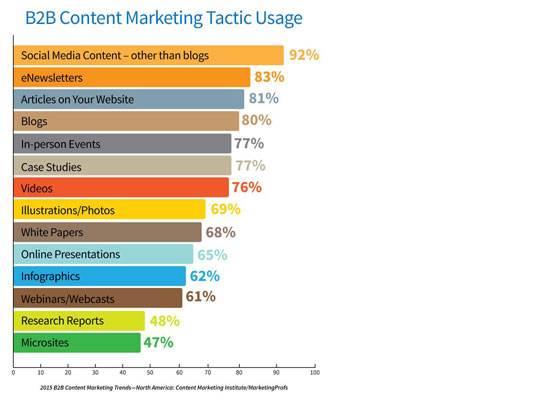You want to stay in the mind of your market. How does your marketing do that?
[embedyt]https://www.youtube.com/watch?v=IfIwxIXGw3k[/embedyt]
Let’s start with what you are doing to communicate right now. If you’re not already aligned with educating and informing (and sometimes entertaining) vs the hard sell, then I suggest you think about this: What are you likely to find more valuable: interesting and helpful information; or a sales promotion message?
I am not discounting the latter for a minute, there is however a time and a place. In fact there is a simple rule you can embrace for social media (which I have re-stolen through Joe Pulizzi) of 4-1-1, which is for every 6 content pieces on any given channel:
- Four should be pieces of content that are relevant for your audience, sourced from and linking back to your influencer (this is makes you a valued peer).
- One should be content you’ve created – useful and relevant.
- The final One piece should be sales-related — like a coupon, product notice, press release, or some other piece of content that no one will likely pay attention to.
Like Joe says, the numbers don’t have to be exact, it’s the philosophy that makes this work.
So what should you be doing?
There are many types of content marketing tactics you could be using (see the chart below for B2B tactics). If you don’t yet have a handle on it, there are quite a lot and it could seem daunting. The trick is to pick one and nail it first, then move on to your next one.

Once you’ve selected your content type, you will need to create an editorial calendar – some suggestions on this are further in this article. Decide on the frequency of your pieces. Do not over-commit, it is best to be consistent and on time.
Take the time to define who it is you are speaking to. My last email about creating buyer persona profiles is the perfect first step. You can read the post here. I implore you to do this step first.
If nothing more define these items for your key buyer:
- The 3-5 top priorities they spend time and money on
- What success means to them
- How you fulfil these success factors
- Their buying process
- And the decision criteria they will use to evaluate you.
With that defined you can set about identifying your goal for your content and a mission statement to critique each item against. This is important to get right up front, especially when you have a team of contributors, so that everything is aligned to the same story and objective.
It is much easier said than done! You will need to put a great deal of thought into it. Here is an example to get you thinking.
Inc. magazine has its mission statement in the first line of its About Us page.
“Welcome to Inc.com, the place where entrepreneurs and business owners can find useful information, advice, insights, resources and inspiration for running and growing their businesses.”
Breaking it down their statement includes:
- The core audience target: entrepreneurs and business owners
- What will be delivered to the audience: useful information, advice, insights, resources, and inspiration
- The outcome for the audience: growing their businesses
More on content mission statements here
Influencers
Once you have created your content mission statement you can begin your search for influencers in your niche that you can connect with and share content, remember that you need 4 out of 6 to come from other valuable sources. Look for those who are already successfully creating content for your audience. Get involved in their channels with comments and questions as well as sharing their content.
Creating your own content
Your communications for both prospective customers and existing customers needs consideration and planning, keeping in mind that after sales communications are even more important than pre-sales. Remember that oldy-but-goody that it’s significantly cheaper and easier to sell to an existing customer than to a new one? Keep them happy, turn them into raving fans, and give them content to share! A winning combination!

When writing your content consider these tips:
- Be relevant
- Be human, be yourself
- Don’t be salesy or use gobbledygook in your content.
- Provide value!
Creating an Editorial Calendar
It can be as simple as buying a wall planner from your favourite office supplies and using Post it notes on key dates with the key information for your organisation, here are some suggestions:
- Author
- Suggested Title
- Channel
- Call to Action
- Proofreader
- Due Date
- Status
You’ll notice the inclusion of proof reader in that list. I cannot stress this enough, proofreading and fact checking. Make sure you are bang on, every time.
Alternatively you can do this online using free tools such as an editorial calendar plugin within your WordPress blog, this way all your blog contributors can know where everything is at from anywhere. Combine this with a spreadsheet to hold the details, I recommend using Google Drive because of the sharing capacity and live collaboration on each document for your team (seriously, try it if you have not). Create specific tabs for all the info for each item similar to the suggestions above.
Make sure you enter key dates into your calendar such as holidays and significant events that impact your audience and what you want to share.
More on Content Marketing
If I have you buzzing about content marketing now, there is a book you must read by Joe Pulizzi called Epic Content Marketing – Get it, read it and get started today.
I’d love to hear your challenges, your successes and thoughts via the comments area below.
Warmly, LF





